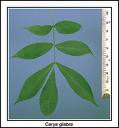Illinois Nut Tree Information
Images of Illinois Nut:






Illinois Nut grows in the following 17 states and provinces:
Alabama, Arkansas, Colorado, Hawaii, Illinois, Indiana, Iowa, Kansas, Kentucky, Louisiana, Maine, Mississippi, Missouri, Ohio, Oklahoma, Tennessee, TexasInformation about Illinois Nut:
The Carya Illinoensis is commonly known as the Illinois Nut, Pecan, Pecan Hickory, Soft-shelled Hickory as well as Sweet Pecan.
The currently accepted scientific name for pecan is Carya illinoensis (Wangenh.) K. Koch . There are no recognized subspecies, varieties, or forms. Pecan hybrid products are : C. illinoensis x C. aquatica = C. X lecontei Little C. illinoensis x C. laciniosa = C. X nussbaumeri Sarg. C. illinoensis x C. tomentosa = C. X schnecki Sarg. C. illinoensis x C. cordiformis = C. X brownii Sarg.Pecan grows principally in the bottomlands of the Mississippi River valley. Its range extends westard from southern Indiana through Illinois, southeastern Iowa, and eastern Kansas, south to central Texas, and eastward to western Mississippi and western Tennessee. Pecan occurs locally in southwestern Ohio, Kentucky, Alabama, and central Mexico. Its best commercial development is on river-front lands of the Mississippi Delta and along major rivers west of the Delta to Texas . Pecan is cultivated in Hawaii .Some of the information provided here is attributed to:Coladonato, Milo. 1992. Carya illinoensis. In: Fire Effects Information System, [Online]. U.S. Department of Agriculture, Forest Service, Rocky Mountain Research Station, Fire Sciences Laboratory (Producer). , available at the USDA Fire Effects Information System (FEIS) website